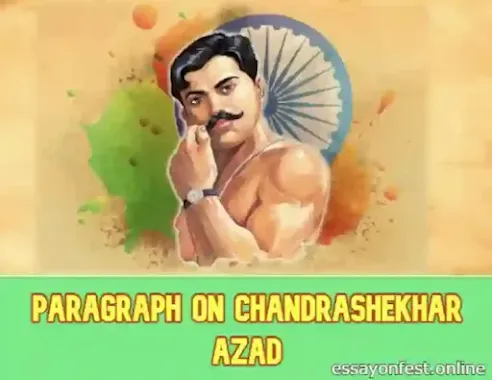Paragraph On Chandrashekhar Azad
Chandrashekhar Azad, a name etched in the annals of India's struggle for independence, stands as an epitome of fearlessness and unyielding dedication to the cause. Born as Chandra Shekhar Tiwari on July 23, 1906, in Alirajpur, Madhya Pradesh, he later adopted the name Azad, meaning "free" in Urdu, symbolizing his commitment to liberate his motherland from the shackles of British colonial rule. Azad's journey as a revolutionary began in his early years, influenced by the fervor of the freedom movement and the sacrifices of leaders like Bal Gangadhar Tilak and Lala Lajpat Rai.
Chandrashekhar Azad's indomitable spirit became evident during the Jallianwala Bagh massacre in 1919, where the brutality of British forces deeply affected him. This incident served as a catalyst for his active participation in the non-cooperation movement led by Mahatma Gandhi in 1920. Azad, however, soon realized that his methods diverged from Gandhi's philosophy of non-violence. Driven by a resolute belief in armed resistance, he parted ways with the mainstream movement to join the ranks of revolutionaries who advocated a more confrontational approach against the British.
Azad's fearless commitment to the cause of independence led him to become a prominent member of the Hindustan Socialist Republican Association (HSRA), a revolutionary organization dedicated to overthrowing British rule through armed struggle. He played a pivotal role in organizing and leading various acts of defiance against the colonial authorities. Azad's tactics were marked by precision and audacity, earning him the moniker of "Azad" for his unbridled commitment to freedom.
The infamous Kakori Train Robbery of 1925 stands as a testament to Azad's strategic acumen. He, along with his compatriots from the HSRA, executed a daring heist to fund the revolutionary activities. The incident not only shook the British administration but also showcased Azad's ability to strike fear into the hearts of the colonial rulers. Following the Kakori incident, a massive manhunt ensued to capture Azad and his associates.
Chandrashekhar Azad's ability to evade capture became legendary, earning him the reputation of a modern-day Robin Hood. His escapades and audacious encounters with the British police became the stuff of folklore, elevating him to the status of a national hero. Azad's commitment to the cause remained unwavering, and he continued to be a thorn in the side of the British authorities.
Azad's leadership skills were evident in the formation of the HSRA, where he worked closely with fellow revolutionaries like Bhagat Singh, Rajguru, and Sukhdev. The organization aimed not only at achieving independence but also at creating a socio-economic system that would be more equitable and just. Azad's vision extended beyond political freedom; it encompassed the broader goal of creating a society free from exploitation and injustice.
The culmination of Azad's revolutionary journey came on February 27, 1931, in Alfred Park, Allahabad. Cornered by the British police, Azad chose to embrace martyrdom rather than surrender. In the fierce gun battle that ensued, he fought valiantly, living up to his name of Azad until the very end. Realizing that capture was imminent, Azad shot himself, choosing death over submission to the British authorities. The park where he laid down his life was later renamed Chandrashekhar Azad Park in his honor.
Chandrashekhar Azad's legacy lives on as a symbol of unyielding courage and sacrifice. His contributions to the Indian independence movement continue to inspire generations of Indians to stand up against injustice and tyranny. Azad's fearless commitment to armed resistance, while contrasting with the non-violent approach of leaders like Gandhi, remains a significant chapter in the multifaceted narrative of India's struggle for freedom.
In contemporary India, Chandrashekhar Azad is remembered not only as a revolutionary leader but also as a symbol of empowerment and resilience. His life and sacrifice serve as a reminder that the fight for justice and freedom often requires individuals to rise above personal safety and embrace the greater cause. The fearless spirit of Azad resonates in the hearts of those who continue to strive for a society where the principles of equality and justice prevail. Chandrashekhar Azad's story is a beacon of hope and a reminder that the flame of freedom, once ignited, can never be extinguished.
Also read: Paragraph On Atithi Devo Bhava
Also read: निसर्ग माझा मित्र मराठी निबंध 500+ शब्द
Also read: Jal Hech Jivan Nibandh In Marathi Essay
THANK YOU SO MUCH

You have given very useful information. Keep it up and keep blogging. I look forward to reading your next post.
ReplyDelete